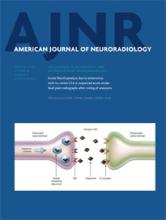Abstract
BACKGROUND AND PURPOSE: Intratumoral calcifications are very important in the diagnosis of retinoblastoma. Although CT is considered superior in detecting calcification, its ionizing radiation, especially in patients with hereditary retinoblastoma, should be avoided. The purpose of our study was to validate T2*WI for the detection of calcification in retinoblastoma with ex vivo CT as the criterion standard.
MATERIALS AND METHODS: Twenty-two consecutive patients with retinoblastoma (mean age, 21 months; range, 1–71 months) with enucleation as primary treatment were imaged at 1.5T by using a dedicated surface coil. Signal-intensity voids indicating calcification on T2*WI were compared with ex vivo high-resolution CT, and correlation was scored by 2 independent observers as poor, good, or excellent. Other parameters included the shape and location of the signal-intensity voids. In 5 tumors, susceptibility-weighted images were evaluated.
RESULTS: All calcifications visible on high-resolution CT could be matched with signal-intensity voids on T2*WI, and correlation was scored as excellent in 17 (77%) and good in 5 (23%) eyes. In total, 93% (25/27) of the signal-intensity voids inside the tumor correlated with calcifications compared with none (0/8) of the signal-intensity voids outside the tumor. Areas of nodular signal-intensity voids correlated with calcifications in 92% (24/26), and linear signal-intensity voids correlated with hemorrhage in 67% (6/9) of cases. The correlation of signal-intensity voids on SWI was better in 4 of 5 tumors compared with T2*WI.
CONCLUSIONS: Signal-intensity voids on in vivo T2*WI correlate well with calcifications on ex vivo high-resolution CT in retinoblastoma. Gradient-echo sequences may be helpful in the differential diagnosis of retinoblastoma. The combination of funduscopy, sonography, and high-resolution MR imaging with gradient-echo sequences should become the standard diagnostic approach for retinoblastoma.
ABBREVIATIONS:
- HRCT
- high-resolution CT
- SIV
- signal-intensity void
- © 2015 by American Journal of Neuroradiology












